When to Fertilize Your Greely Lawn for Best Results
Want a lush, green lawn without the hassle? Let our experts handle your lawn care needs!
Request a Free Quote TodayQuick Summary:
- Best times to fertilize your Greely lawn: Early Spring (mid-April to early May), Late Spring (late May to June), Early Fall (late August to September), and Late Fall (October to early November).
- The late fall application is the most important for Ottawa area lawns.
- Use slow-release fertilizers for best results in our local climate.
- Consider N-P-K ratios based on seasonal needs (higher N in spring, higher K in fall).
- Always water in fertilizer unless rain is expected within 24 hours.
Introduction: Your Greely Lawn Deserves the Best (And So Do You!)
Okay, let’s be honest. We all dream of that perfect, lush, green lawn – the kind that makes neighbours whisper (in a good way!). But sometimes, reality hits, and our patch of Greely paradise looks… well, a little less paradise and a bit more patchy. Achieving that dream lawn isn’t just about wishful thinking or random gardening efforts, especially here in the Ottawa region. Our unique climate, with its enthusiastic winters and blink-and-you’ll-miss-it growing season, plays a huge role in successful lawn care and landscaping.
One of the biggest secrets to a truly happy lawn? Timing your fertilizer application just right. Unlike places with year-round warmth, simply tossing down fertilizer whenever the mood strikes won’t cut it for lawns in Greely or neighbouring areas like Manotick. Getting the timing wrong can waste your effort and money, or worse, stress your grass right before it needs to bunker down for winter. Understanding when to feed your lawn, based on our specific local conditions, is crucial for that vibrant green carpet you envision.
Don’t worry, you don’t need a horticulture degree! This guide is here to help. We’ll walk you through:
- A simple seasonal fertilizing schedule tailored for the Greely and greater Ottawa climate.
- Key factors about our local soil and weather patterns that affect your lawn.
- Practical, actionable tips to help you get the best results from your fertilizer.
Ready to give your lawn (and yourself – less lawn stress is good stress!) the VIP treatment it deserves? Let’s dig in!
Decoding Your Greely Turf: Understanding Local Lawn Needs
Okay, let’s get down to the nitty-gritty of what makes your Greely lawn tick (or sometimes, look a bit ticked off!). Growing gorgeous grass here isn’t quite the same as in, say, sunny California. Our lawns have their own unique personality, shaped by the specific quirks of living in the greater Ottawa region.
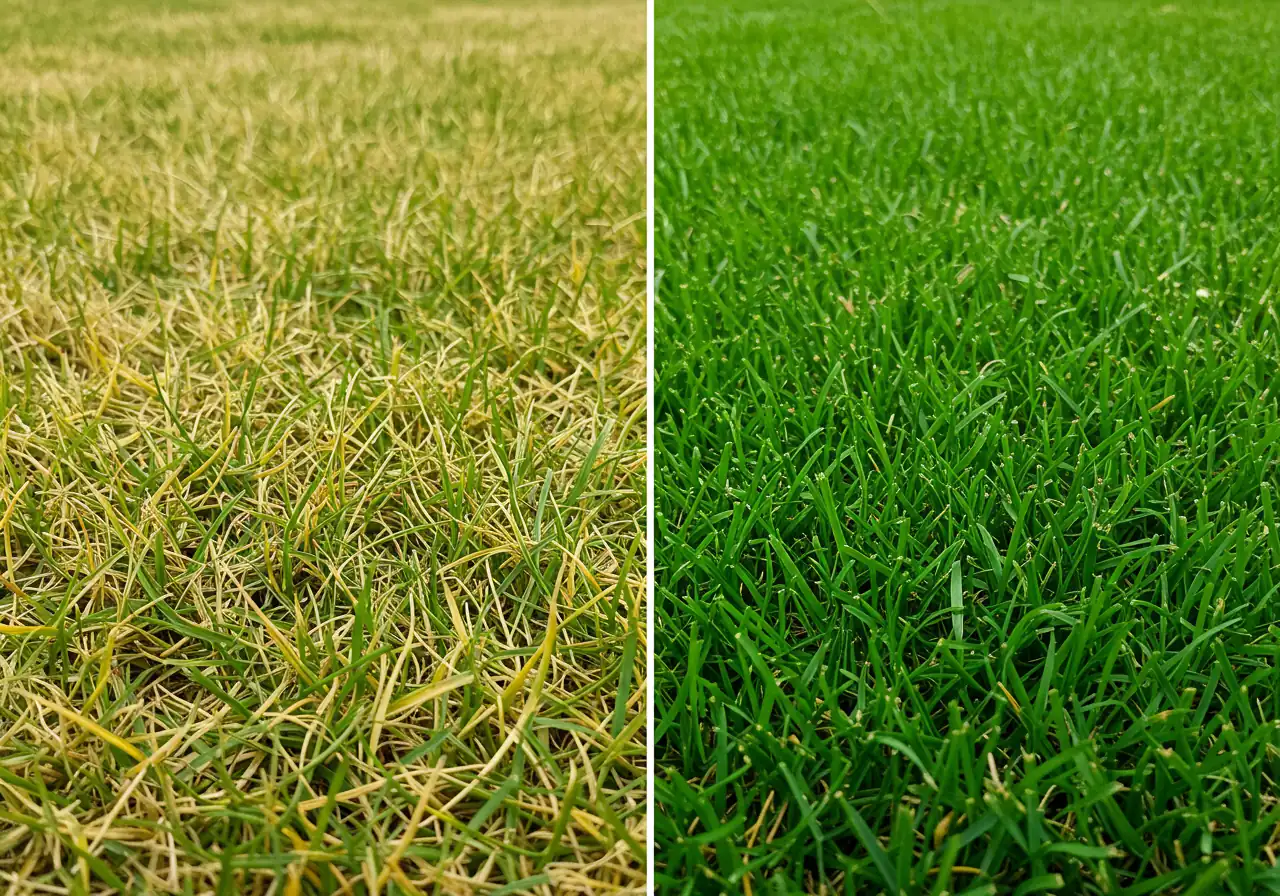
First off, let’s talk about the elephant in the room: our climate. We basically have two main seasons: “Winter is Coming” and “Quick, Grow Before Winter Comes Back!” Our growing season is notoriously short, bookended by chilly springs and autumns that arrive faster than a slap shot. This means your grass has a limited window to grow strong and store energy. Then comes winter, with its freezing temperatures, snow cover (sometimes icy!), and the potential for damage like winterkill or snow mold. This intense cycle puts a lot of stress on your turf. Generic fertilizer schedules often don’t account for the specific needs of grass bracing for, or recovering from, an Ottawa winter.
Then there’s the soil beneath your feet. The ground around Greely, Manotick, and Osgoode can be quite variable. You might find areas with heavy clay soil that holds water like a bathtub (leading to compaction and drainage issues), or sandier spots that let water and nutrients drain away too quickly. Understanding your specific soil type is crucial because it directly impacts how well your lawn absorbs water and, you guessed it, fertilizer! Improving soil structure is often key for healthy growth; understanding the foundation is as vital for lawns as it is when considering the . A soil test can be a real eye-opener!
What kind of grass are we usually dealing with? Here, it’s mostly cool-season grasses like Kentucky Bluegrass, Fescues, and Ryegrass. These guys are chosen for their ability to handle our colder temperatures, but they still need the right nutrients at the right time to thrive, especially during that short growing burst and recovery periods.
Signs Your Lawn is Crying Out for Nutrients
- Yellowing: Especially older leaves turning pale yellow can signal a lack of Nitrogen (N), the nutrient most responsible for that lovely green colour.
- Slow Growth: If your lawn seems stuck in slow motion compared to your neighbours’, it might be hungry.
- Thinning Patches: While other issues can cause this, poor nutrition makes grass weak and less dense.
- Weed Invasion: Healthy, thick turf is the best defence against weeds. If weeds are taking over, your grass might lack the nutrients to compete.
Making sure your lawn gets what it needs involves more than just fertilizer. Efficient watering is crucial, especially during dry spells in our short summer. Techniques like those used in and explored further in highlight the importance of getting water right to the roots where it’s needed most. Protecting the soil surface can also help retain moisture and temperature; choosing the best mulch for Ottawa gardens: a local guide provides insights applicable even to protecting the soil around landscape features near your lawn.
Decoding your Greely turf might seem like a bit of detective work, but understanding these local factors is the first step towards that lush lawn you’re dreaming of. If juggling soil types, climate challenges, and nutrient needs feels overwhelming, remember there are comprehensive lawn care and landscaping services available to help tailor a plan specifically for your patch of paradise.
Ready for expert help with your lawn care needs?
Get Professional Help With Your Lawn CareFertilizer 101: Choosing Your Lawn’s Next Meal (Without the Headache)
Okay, let’s talk fertilizer! Choosing the right lawn food can feel like navigating a vitamin aisle for your grass – confusing, right? But don’t sweat it. Getting the hang of fertilizer basics is easier than you think, and it’s key to that gorgeous green lawn you’re aiming for in Ottawa. Think of it as ordering the perfect meal for your turf, minus the complicated menu.
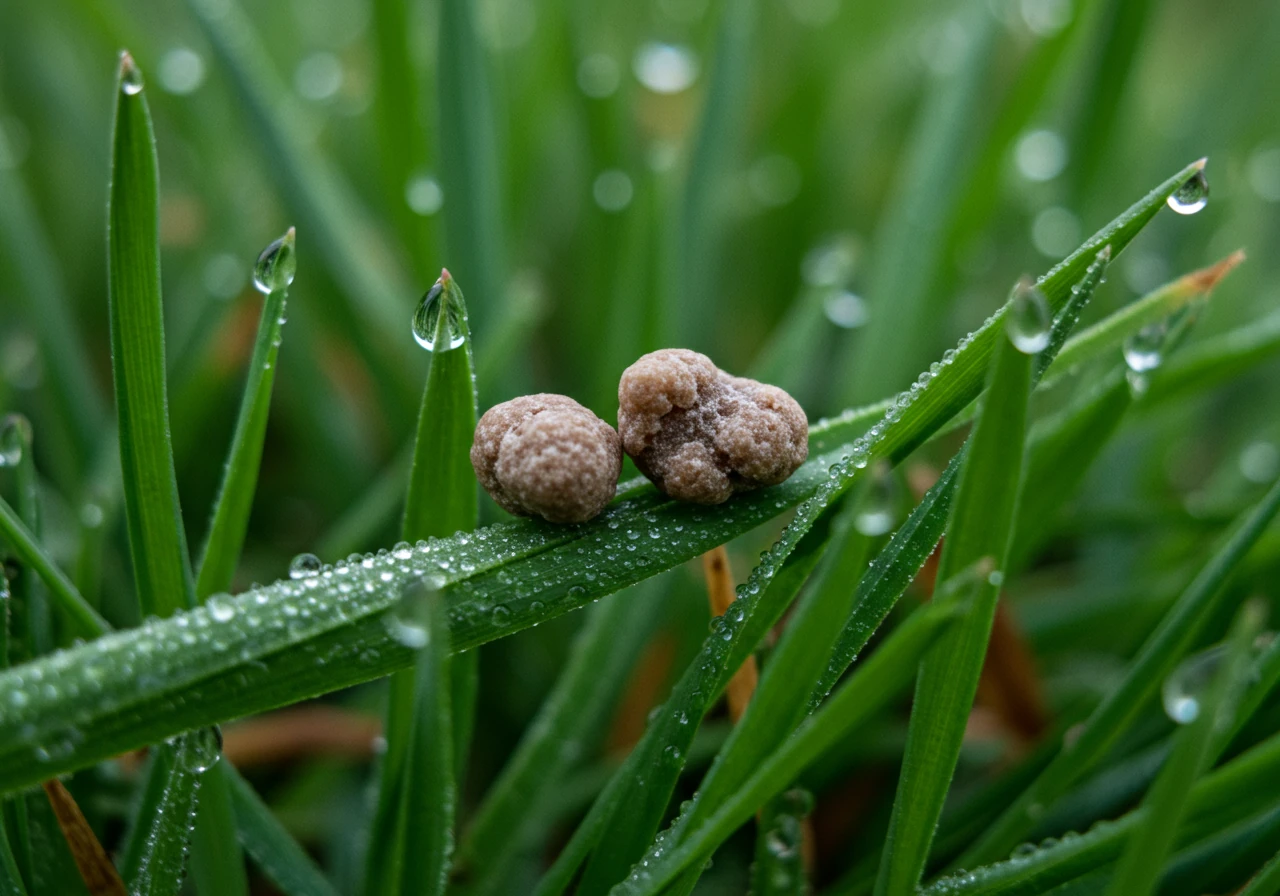
Decoding the Secret Code: N-P-K
Ever seen those three numbers on a fertilizer bag, like 10-10-10 or 24-0-6? That’s the N-P-K ratio, the Big Three nutrients your lawn craves. It’s like the nutritional info on a food label:
- N = Nitrogen: This is the superstar for green growth. Think of it as the main course, promoting lush, leafy top growth and that vibrant colour everyone loves.
- P = Phosphorus: This one’s all about the roots and shoots. Phosphorus helps your grass establish strong roots and encourages new growth – vital for young lawns or after overseeding.
- K = Potassium (Potash): Consider this the overall health booster. Potassium helps your lawn handle stress like drought, heat, cold (hello, Ottawa winters!), and disease. It’s like a vitamin shield for your grass.
Choosing Your Style: Fertilizer Types
Granular vs. Liquid Fertilizers
Granular: Little pellets you spread over the lawn. Often slower-releasing, providing nutrients over time. Easier for beginners to apply evenly, less risk of burning the lawn if used correctly.
Liquid: Mixed with water and sprayed. Absorbed quickly by the grass blades and roots for a fast green-up. Can be trickier to apply evenly and may need more frequent applications.
Slow-Release vs. Quick-Release
Slow-Release: Nutrients are coated or in a form that breaks down gradually. Feeds the lawn steadily over weeks or months. Highly recommended for our Ottawa climate! It reduces nutrient runoff into waterways, prevents burning, and provides consistent feeding during our shorter growing season. Your lawn will practically thank you for this steady diet.
Quick-Release: Nutrients are readily available. Gives a fast green boost but can fade quickly and carries a higher risk of burning the lawn if over-applied.
Eco-Friendly Options
- Slow-Release: Better for consistent feeding and reduces runoff.
- Organic Fertilizers: Options like compost, manure, or bone meal improve soil structure while feeding slowly.
- Grasscycling: Leave the grass clippings on the lawn after mowing! They decompose and return valuable nitrogen to the soil naturally.
- Soil Test: Tells you exactly what nutrients your specific lawn needs, preventing over-fertilization.
Reading the Bag Like a Pro
Besides the N-P-K ratio, the bag tells you how much area it covers (e.g., “Covers 5,000 sq. ft.”). Always follow the application rate instructions! Using too much won’t make your lawn greener faster; it can harm your grass and the environment. Also, check if it contains weed control (“weed and feed”) or insect control – only use these if you actually have those problems. Preparing your lawn before you fertilize is also important; ensuring it’s clear of debris makes application easier and more effective – something a service like a Russell garden clean up service can assist with if needed. A tidy lawn environment often reflects a tidy property overall; keeping surrounding garden beds neat, perhaps with help from a Marionville garden clean up service, can also reduce weed pressure on your lawn.
Fertilizer Type Effectiveness by Season
Choosing the right fertilizer doesn’t require a chemistry degree. By understanding N-P-K, the different types available, and favouring slow-release options suitable for our region, you’re well on your way. Sometimes, a comprehensive approach is best; if you’re tackling more than just fertilizing, considering a Marionville property cleanup service can help get your entire outdoor space in top shape. Now go forth and feed your lawn wisely!
The Greely Lawn Fertilization Calendar: Perfect Timing for Peak Green
Okay, neighbour, let’s talk timing! Fertilizing your lawn in Greely, or anywhere around Ottawa for that matter, isn’t just about tossing down some pellets whenever you remember. Timing is everything – kind of like trying to catch that perfect sunset photo, get it slightly wrong and it’s just not the same! Getting your fertilizer schedule dialed in is the secret handshake for a truly lush, green lawn that can handle our unique climate.
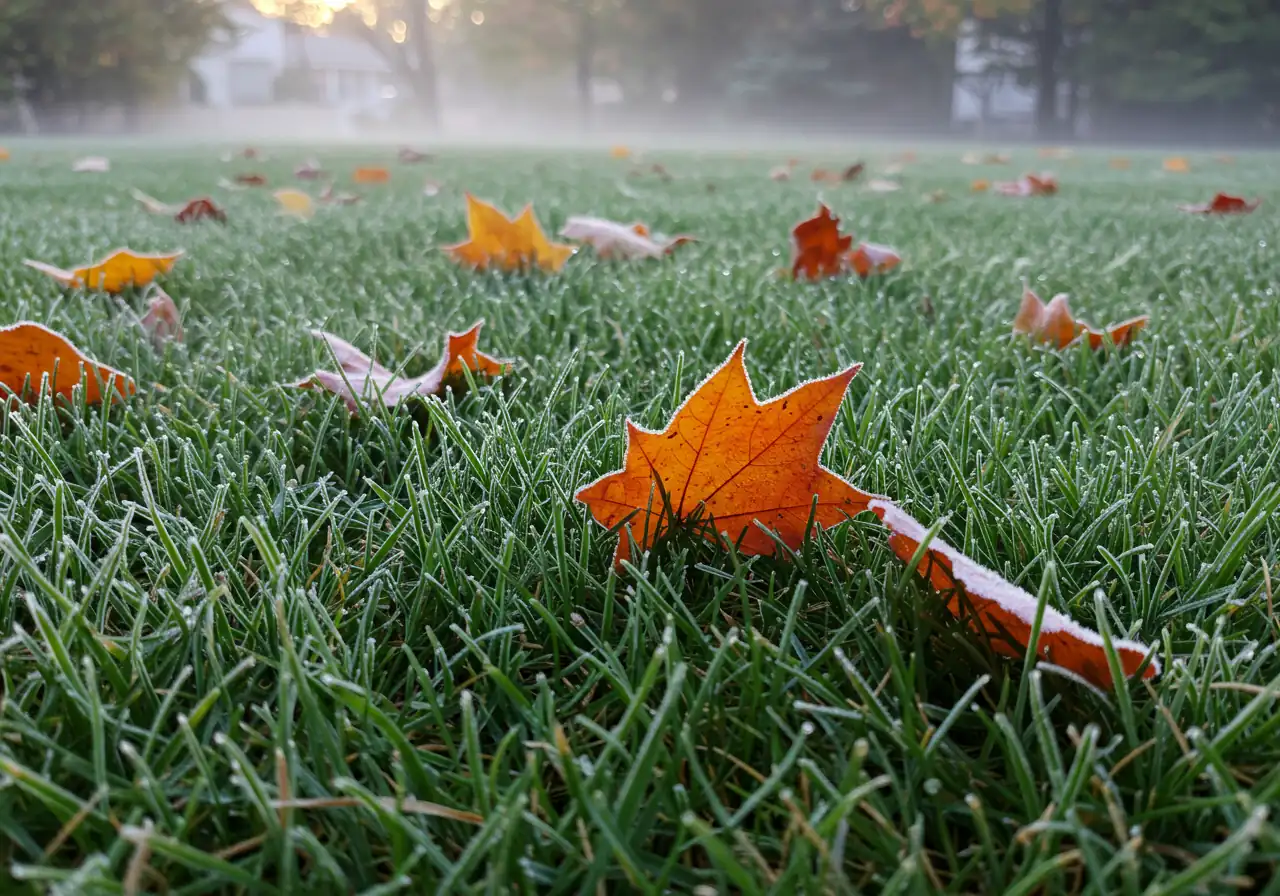
Here’s a simple seasonal guide to help you nail that timing for peak green:
Early Spring (Mid-April to Early May)
Goal: Gently wake up the grass after its long winter nap and give it a boost for initial green-up and recovery from any winter woes.
Timing: Wait until the ground isn’t soggy and the grass has actually started growing – usually after the first mow or two. Applying too early when the ground is cold and wet is like trying to feed someone who’s still asleep; the nutrients won’t be absorbed effectively.
Fertilizer: Use a balanced, slow-release fertilizer. A light application is often plenty. Before this first feed, ensure your lawn is clear of winter debris. Sometimes a good spring clean is needed; services focusing on property clean-up can get your yard ready.
Late Spring / Early Summer (Late May to June)
Goal: Fuel the major growth period. This is when your cool-season grass is really hitting its stride, thickening up and deepening its colour.
Timing: Apply about 4-6 weeks after your early spring application. This feeds the lawn during its most active growth phase before the summer heat potentially slows things down.
Fertilizer: A nitrogen-rich, slow-release formula is ideal here to sustain that vigorous growth. Our team, detailed on the Clean Yards About Us page, often recommends specific blends for this crucial period.
Summer (July & August)
Goal: Maintain health without pushing excessive growth during potential heat and drought stress.
Timing: Generally, avoid fertilizing in the peak heat of summer. High nitrogen fertilizer combined with heat can stress or even burn your lawn. If you must fertilize (e.g., your lawn looks genuinely hungry and you’re watering properly), do it lightly, use a very slow-release or organic option, and never apply it during a drought or heatwave. Water it in well. Consider this the “less is more” season.
Early Fall (Late August to September)
Goal: Help the lawn recover from summer stress and encourage root growth before winter.
Timing: As temperatures start to cool down consistently, this application helps repair any summer damage and prepares the turf for the most important feeding to come.
Fertilizer: A balanced slow-release fertilizer works well. Good root development now means a healthier lawn next spring. Think of this as tucking your lawn in after a busy summer. For areas needing more intensive tidying before this feed, a specific Marionville yard cleanup service might be just the ticket.
Late Fall (October to Early November)
Goal: This is arguably the most important application for Ottawa lawns! It promotes serious root development, enhances nutrient storage for winter survival, and encourages early green-up next spring without pushing tender top growth that could be damaged by frost.
Timing: Apply after the grass has mostly stopped growing (you’re mowing less often) but before the ground freezes solid. Usually, sometime in October works well for Greely, Embrun, and surrounding areas.
Fertilizer: Use a slow-release fertilizer specifically formulated for fall/winter, often with higher Potassium (K) to boost hardiness. Think of it as packing a winter survival kit for your grassroots.
Pro Tip: Mark Your Calendar!
Grab a calendar and mark down approximate dates for fertilizing based on these guidelines. It makes remembering so much easier!
Following this Greely lawn fertilization calendar helps ensure you’re feeding your lawn what it needs, when it needs it most. If keeping track of applications and choosing the right products feels a bit overwhelming, don’t hesitate to reach out. You can easily book a free lawn care estimate online with us. When you submit your details, rest assured we respect your information; you can review our commitment in our website privacy policy. Let’s get that lawn looking its best!
Applying Fertilizer Like a Greely Pro: Tips for Success (and Avoiding Oopsies)
Alright, you’ve picked out your lawn’s next gourmet meal (aka fertilizer) and figured out the best timing using our Greely-centric calendar. High five! Now comes the moment of truth: actually applying it without creating lawn art that looks more like modern art gone wrong (think stripes, spots, or burnt patches). Applying fertilizer isn’t rocket science, but doing it right definitely makes a difference between a “meh” lawn and a “wow!” lawn in Ottawa neighbourhoods like Greely or Barrhaven. Let’s avoid those dreaded “oopsies” and get this done like a pro.
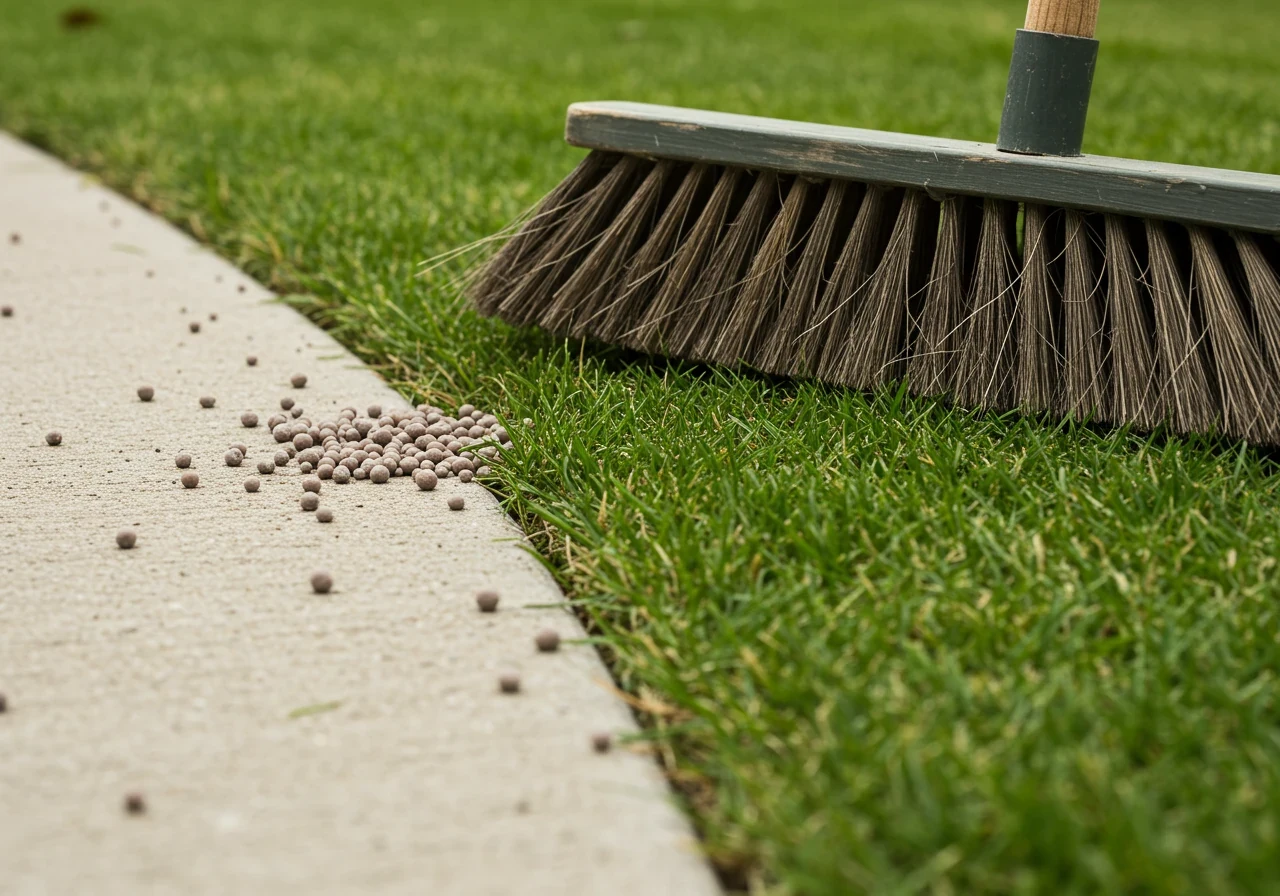
First Things First: Prep Like a Champion
Before you even think about ripping open that bag, take a few minutes to prepare. Trust us, it saves headaches later!
- Read the Fine Print: Seriously, read the fertilizer bag and your spreader’s manual. They have crucial info on application rates and spreader settings specific to that product. It’s like reading the recipe before you bake!
- Safety Gear Up: Protect yourself! Wear gloves to keep fertilizer off your skin, and maybe safety glasses and a dust mask if it’s windy or you’re sensitive.
- Weather Watch: Avoid super windy days – you don’t want fertilizer blowing into your prized petunias or onto the neighbour’s driveway. Applying just before light rain is often ideal, but avoid doing it before a heavy downpour which can wash it all away.
- Clear the Battlefield: Remove toys, hoses, patio furniture, and any other obstacles from the lawn. If your yard looks like a post-party disaster zone, getting things tidy first helps ensure even coverage. If needed, an Ottawa garden clean up service can whip things into shape before you start.
Your Spreading Chariot: Choose Wisely & Calibrate!
You’ll need a spreader for granular fertilizer. The two main types are:
- Broadcast (Rotary) Spreader: Throws granules in a wide arc. Faster for larger lawns but requires careful overlapping to avoid stripes.
- Drop Spreader: Drops granules straight down between the wheels. More precise, good for smaller lawns or tricky patterns, but requires very careful lining up of passes to avoid missed strips or overlaps.
The MOST Skipped (But Super Important) Step: CALIBRATION!
Okay, lean in, this is key. Fertilizer bags give suggested spreader settings, but spreaders vary. Calibration ensures you’re putting down the right amount of fertilizer per square foot. Applying too little won’t give results, and too much can burn your lawn and waste money.
Quick Calibration Idea: Measure a small test area (say, 100 sq ft). Check the bag for how much fertilizer should cover that area. Weigh out that amount. Put it in your spreader (set to a starting guess). Apply it to the test area. If you run out early, your setting is too high. If you have leftover, it’s too low. Adjust and repeat until it’s just right. Yes, it takes a few extra minutes, but it prevents major oopsies!
The Application Dance: Spreading with Style
- Fill ‘er Up (Safely): Place your spreader on a tarp or your driveway/walkway before filling it. Spills happen, and fertilizer can stain concrete or burn the grass if concentrated in one spot. Sweep up any spills immediately.
- Protect the Perimeter: Engage your spreader’s edge guard feature (if it has one) or make a couple of passes around the entire lawn edge first. This creates a buffer and prevents throwing granules into garden beds, onto sidewalks, or into waterways.
- Walk the Walk: Start walking at a steady, consistent pace before opening the hopper (the part that releases the fertilizer). Walk in straight lines, slightly overlapping each pass according to your spreader manual (usually by about a tire width for broadcast spreaders) to ensure even coverage. Think mowing patterns! Turn off the spreader flow when you stop walking or make turns.
- Half Rate Hack (Optional): For extra insurance against stripes, especially with broadcast spreaders, set your spreader to half the recommended rate. Apply over the entire lawn in one direction (say, north-south), then apply again over the entire lawn going perpendicular (east-west).
The Finishing Touches: Cleanup and Watering In
- Sweep It Up: Immediately sweep any stray granules off sidewalks, driveways, patios, and roads back onto the lawn. This prevents runoff into storm drains and protects local waterways – an easy eco-friendly step!
- Water Wisely: Unless rain is expected within 24 hours, lightly water your lawn after applying fertilizer. This washes the granules off the grass blades and helps them start dissolving into the soil where the roots can access the nutrients. Aim for about a quarter-inch of water – no need to create puddles. Proper watering is a cornerstone of great expert lawn care.
Common Oopsies to Dodge:
- Filling the spreader while it’s sitting on the grass.
- Stopping or starting with the spreader hopper open, dumping excess in one spot.
- Forgetting to overlap passes, leading to green stripes next to yellow ones.
- Walking at an inconsistent speed.
Applying fertilizer correctly takes a little practice, but following these steps will have your Greely lawn looking greener in no time. Correct feeding is also vital when establishing new grass, giving it the nutrients needed to thrive after a professional sod installation. If this all sounds a bit much, or you’d rather spend your weekend relaxing, professional lawn care services can handle it for you. When considering pros, it’s wise to review their service details, often found in their terms and conditions, to ensure they meet your needs. You can even see what neighbours are saying by checking out customer estimate feedback! Happy fertilizing!
Greely Lawn Care Quick Wins: Key Takeaways
Okay, let’s boil it all down! You’ve journeyed through the why, what, and when of feeding your Greely lawn. If your brain feels a bit like it’s been aerated (in a good way, hopefully!), here are the absolute must-remember quick wins. Think of this as your handy cheat sheet for lawn fertilization success right here in the Ottawa area.
Key Takeaways for Lawn Fertilization Success:
- Timing is Your Secret Weapon (Especially That Fall Feed!): Forget guesswork! Our short Ottawa growing season means timing matters a lot. Feed lightly in early spring, boost in late spring, ease off in summer’s heat, but never skip the crucial late fall application (October/early November). This “winter coat” feed is the single most important meal for helping your grass survive winter and green up fast next spring.
- Go Slow and Steady Wins the Race: Choose slow-release granular fertilizers whenever possible. They spoon-feed your lawn over time, reducing the risk of burning, minimizing nutrient runoff into our local waterways, and providing consistent goodness throughout our shorter seasons. It’s like a healthy meal plan versus a sugar rush for your grass.
- Application Smarts = Happy Lawn: Don’t just fling fertilizer and hope for the best! Read the bag instructions. Calibrate your spreader (yes, really!). Walk at a steady pace, overlap your passes correctly to avoid stripes, and use an edge guard near pavement and garden beds. Seeing beautifully consistent lawns in our project photo gallery often comes down to this kind of careful application.
- Prep Work Pays Off: Before you spread, clear the lawn of leaves, toys, and debris. Fertilizer needs to reach the soil, not get stuck on obstacles. A quick tidy ensures better coverage – think of it as a mini version of prepping for a larger job, like the work done by a Metcalfe property cleanup service. After applying, sweep any stray granules off hard surfaces immediately!
- Water It In (But Don’t Drown It): Unless gentle rain is forecast within 24 hours, give your lawn a light watering after fertilizing. This helps wash the nutrients off the blades and down to the roots where they’re needed. Just enough to moisten the soil, not create puddles. This step is crucial, whether you’re nurturing an established lawn or providing care after a new custom garden installation nearby.
- Listen to Your Lawn (and Get Help if Needed!): Pay attention to signs of stress. Don’t fertilize during extreme heat or drought. Remember that fertilizing is just one part of the puzzle; consistent mowing, watering, and general upkeep are vital too. For a holistic approach, consider integrating fertilizing with regular expert garden maintenance. If you’re feeling unsure or just want someone else to handle it, don’t hesitate to ask the pros! You can always contact Clean Yards directly for advice tailored to your specific Greely lawn.
Stick to these core principles, and you’ll be miles ahead in the quest for that lush, healthy lawn that makes the neighbours peak over the fence (with admiration, of course!). Happy fertilizing!
Let the experts handle your lawn care needs!
Get Professional Help With Your Lawn FertilizationFAQs: Your Greely Lawn Fertilization Questions Answered
Here are answers to some common head-scratchers about keeping your Greely lawn looking great with fertilizer.
If you only fertilize once (though we recommend more!), make it late fall (October/early November) before the ground freezes. This “winterizer” application helps roots store nutrients for winter survival and promotes a quicker green-up next spring. It’s the most crucial feeding for lawns here in the Ottawa area.
“Weed and feed” can be convenient, but it’s often better to address weeds separately. Healthy, thick turf is the best weed defense! If weeds are severe, spot treatments or a dedicated weed control plan might be more effective. Sometimes a full overhaul is needed, as shown in some impressive lawn and garden transformations.
While a balanced slow-release fertilizer is often a good base, using only one type isn’t ideal. Your lawn’s needs change seasonally – more nitrogen for spring green-up, more potassium for fall hardiness. Our approach to material selection for lawn health reflects using the right product at the right time for optimal results in areas like Greely or nearby Barrhaven.
The golden rule is to always read the product label, as recommendations vary. Generally, it’s best to keep kids and pets off until the fertilizer granules have been watered in and the lawn has dried completely. This usually takes about 24 hours, but check the specific product instructions for safety.
Don’t panic! Missing one application isn’t the end of the world for your lawn. Just focus on getting the next scheduled feeding right, especially that important late fall one. If you’re using a service, you can usually check your upcoming schedule via the online customer portal to stay on track.
Fertilizer is food, but it can’t fix underlying issues! Poor results could be due to compacted soil, thatch buildup needing removal (perhaps part of a Metcalfe garden clean up service if thatch is heavy), improper watering, pests, or disease. Healthy lawns start with good ground conditions, making proper soil preparation for landscaping absolutely key.
Conclusion: Achieve Your Dream Lawn in Greely
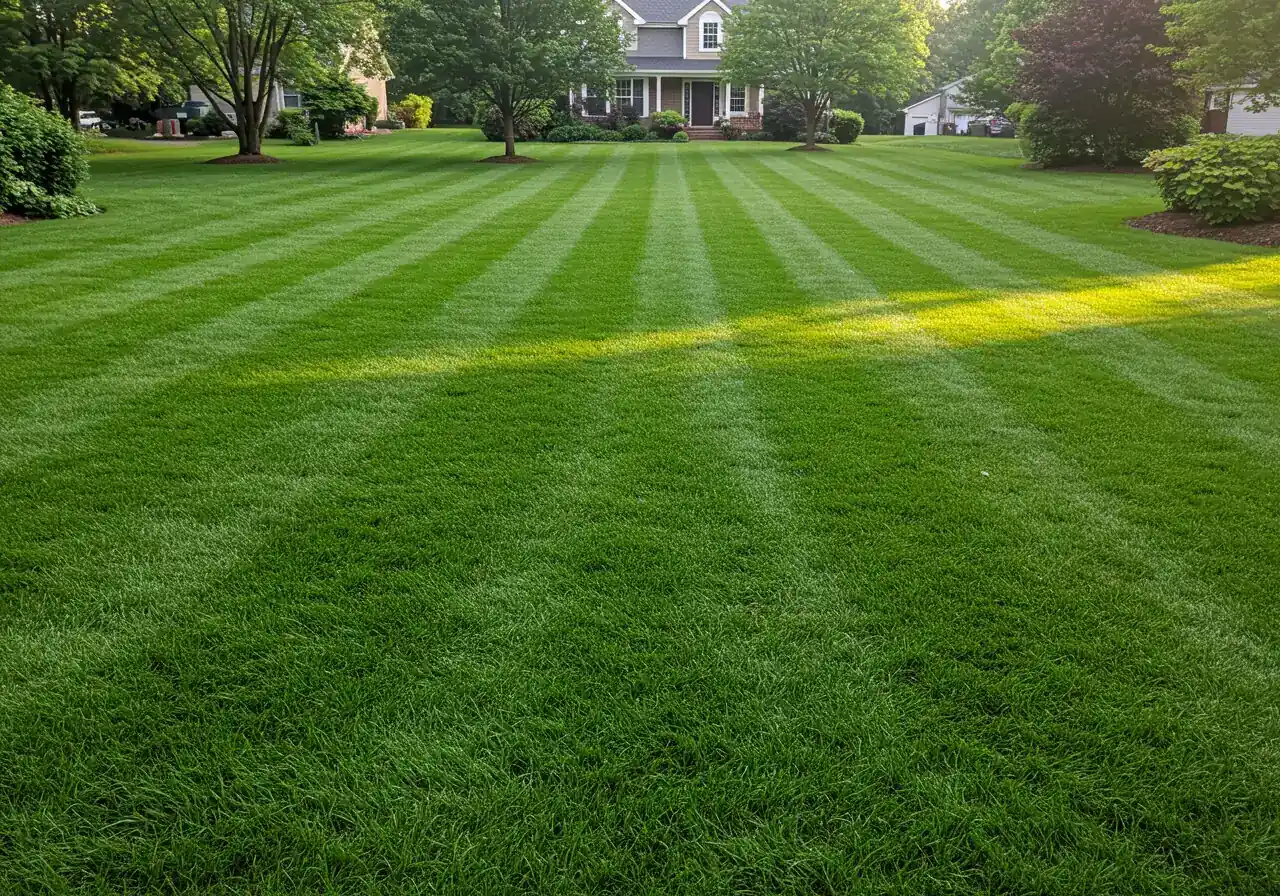
Well, there you have it! Creating that gorgeous, envy-inducing lawn in Greely isn’t about magic beans or crossing your fingers. As we’ve seen, the real secret sauce lies in smart timing and understanding what your specific patch of Ottawa turf needs, especially when it comes to fertilizer. From decoding N-P-K and choosing slow-release goodness to nailing that crucial late fall application, you’re now equipped with the know-how for successful lawn care. Remembering these key steps means less guesswork, healthier grass that can tough out our winters, and more time enjoying your beautiful yard – maybe even impress folks over in Barrhaven!
Following the right fertilization schedule and application techniques leads to a stronger, greener lawn that’s better equipped to handle everything our unique climate throws at it. It’s the foundation of fantastic landscaping and gardening efforts.
Ready to turn lawn care dreams into reality?
- Ditch the DIY stress: Let our experts handle the timing and application for you. Book Your FREE Greely Lawn Care Estimate Today!
- Need a quick reminder? Download our simple Ottawa Lawn Fertilization Calendar (link placeholder).
- Want more tips? Explore our other lawn care and gardening articles on the Clean Yards Blog.
Let’s get your Greely lawn looking its absolute best!
Ready for professional lawn care services in Greely?
Get Professional Help With Your Lawn CareCheck out our Google reviews to see what your neighbors are saying!
Explore More Clean Yards Services
Service Areas
- Ottawa Garden Clean-Up
- Russell Garden Clean-Up
- Marionville Garden Clean-Up
- Marionville Yard Cleanup
- Marionville Property Cleanup
- Metcalfe Garden Clean-Up
- Metcalfe Property Cleanup


